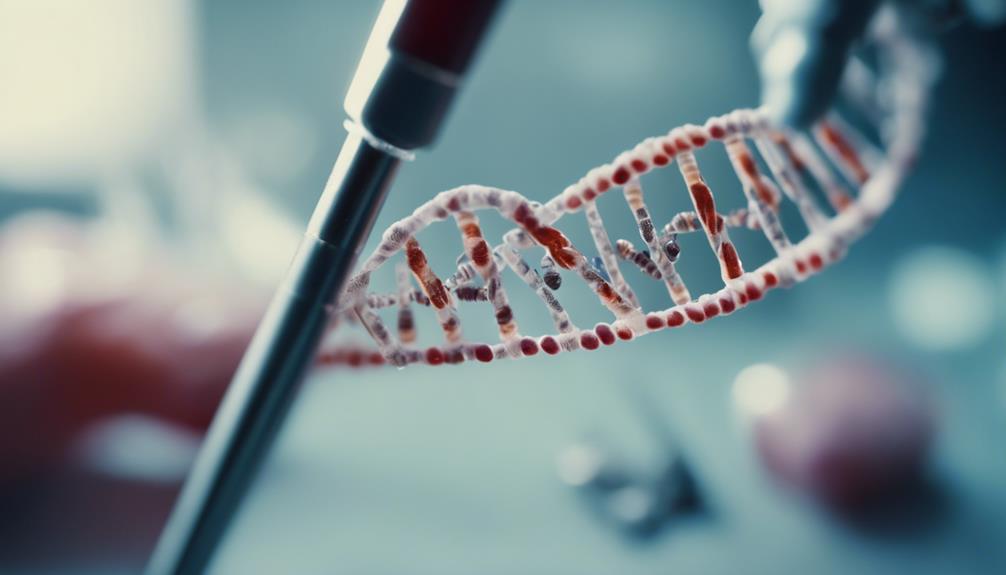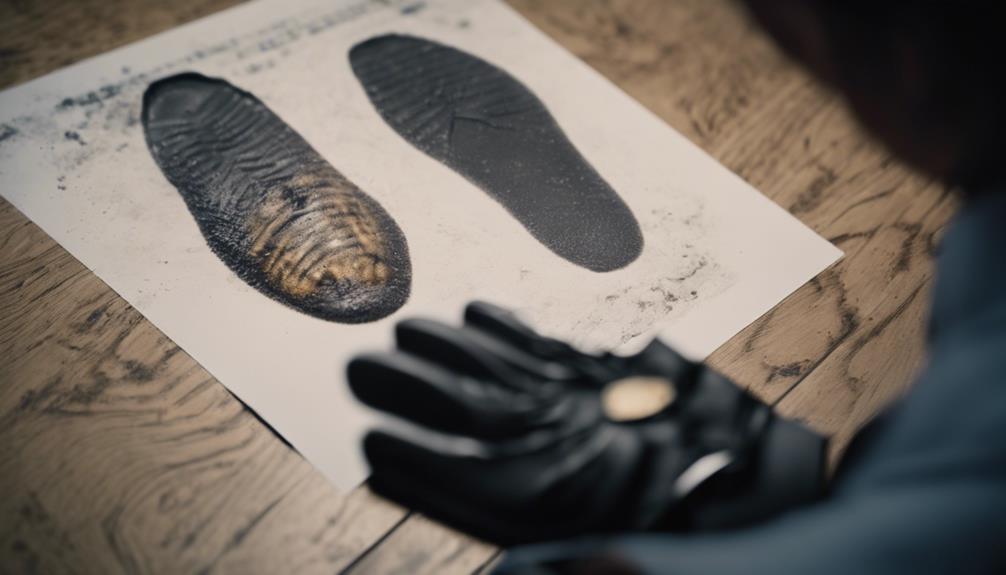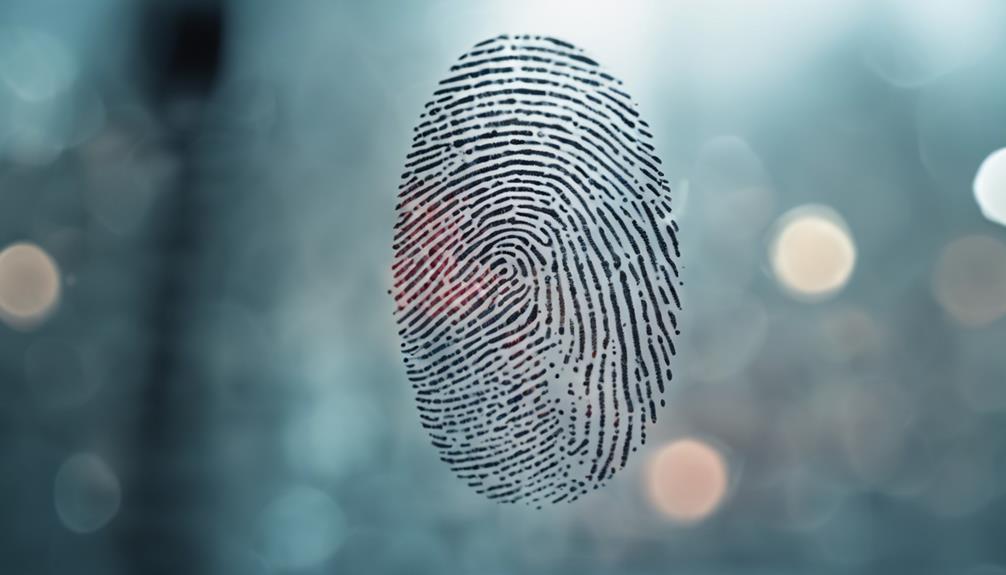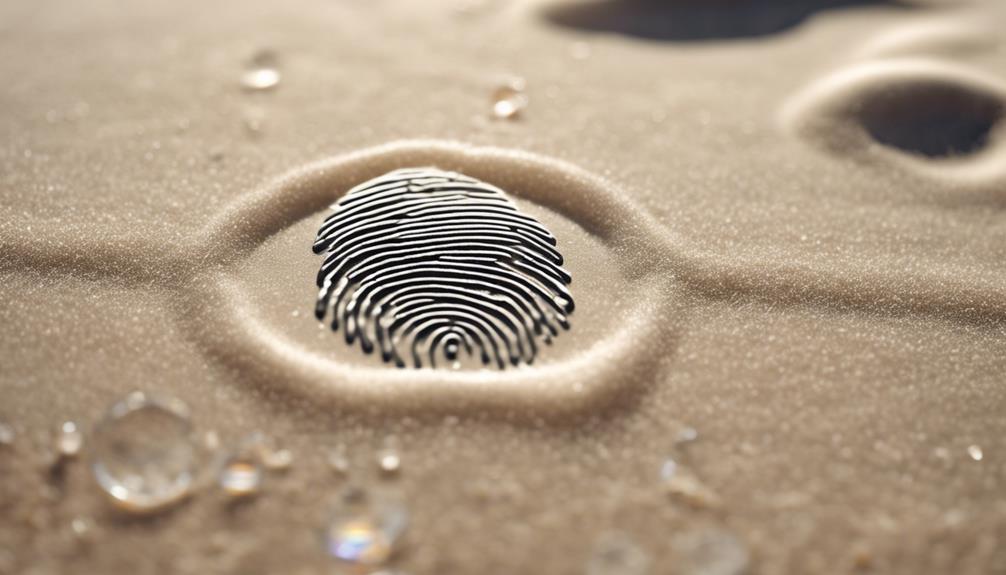In legal terms, individual evidence pinpoints a single source, pivotal in identifying suspects in criminal cases with precision. It offers a direct link between individuals and crime scenes, aiding in establishing guilt or innocence. If you want to understand the essence of individual evidence, recognizing its significance in forensic investigations and legal proceedings is paramount.
Key Takeaways
- Individual evidence is unique to a single source.
- It aids in identifying individuals in criminal investigations.
- Provides a precise link in legal contexts.
- Helps establish guilt or innocence in cases.
- Crucial for pinpointing suspects and linking them to crimes.
Definition of Individual Evidence
Individual evidence refers to specific characteristics that uniquely tie evidence to a single source, aiding in identifying individuals in criminal investigations. This type of evidence plays an essential role in narrowing down suspects by directly linking evidence to a particular person, such as a unique fingerprint on a weapon.
Examples of individual evidence include DNA profiles, specific tool marks, or handwriting characteristics that are distinct to a single individual. Unlike class evidence, which can be more general, individual evidence provides a more precise link to a specific person or object.
In criminal investigations, the presence of individual evidence can be instrumental in not only identifying but also convicting suspects based on the unique traits that tie them directly to the crime scene. By focusing on these specific characteristics, investigators can build a stronger case against individuals, increasing the likelihood of justice being served.
Significance in Criminal Investigations

Individual evidence holds immense significance in criminal investigations. It aids in the precise identification of suspects based on unique characteristics like DNA profiles and fingerprints.
This evidence plays a vital role in linking suspects directly to a crime scene, providing irrefutable connections in court proceedings. Understanding the significance of individual evidence can be pivotal in establishing guilt or innocence in criminal cases.
Importance in Identifying Suspects
In criminal investigations, the significance of individual evidence lies in its pivotal role in pinpointing specific suspects through unique identifying characteristics.
Individual evidence, such as fingerprints, DNA, and tool marks, plays a vital role in narrowing down potential suspects to a specific source. By identifying these unique characteristics, investigators can directly link a suspect to a crime, either to convict or exclude them based on the distinctiveness of the evidence.
Courts often rely on individual evidence to establish a direct connection between a suspect and a crime scene or victim, making it a cornerstone of the prosecution's case.
The importance of individual evidence in identifying suspects can't be overstated, as it provides a definitive link between a specific person and the crime, enhancing the strength and credibility of the investigative process and legal proceedings.
Uniqueness for Precise Identification
Utilizing unique characteristics for precise identification is paramount in criminal investigations, providing a direct link between suspects and crime scenes. Individual evidence, such as fingerprints, DNA, and toolmarks, plays an essential role in narrowing down evidence to a specific source, be it a person or an object. This type of evidence is distinctive to a particular individual, making it invaluable in positively identifying suspects or ruling out innocent parties. Unlike class evidence, which can only categorize evidence into groups, individual evidence offers precise identification that can directly implicate a suspect in a crime.
To emphasize the significance of individual evidence in criminal investigations, consider the following table:
| Individual Evidence | Significance |
|---|---|
| Unique characteristics | Narrow down evidence to a specific source |
| Distinctive features | Direct link between suspects and crime scenes |
| Helps in positive identification | Excludes innocent parties |
| Provides precise identification | Aids in pursuit of justice |
| Implicates suspects directly | Establishes clear connections between evidence and individuals |
Role in Linking Evidence
When examining evidence in criminal investigations, pinpointing specific sources becomes essential for establishing direct connections to persons or objects involved.
Individual evidence plays a pivotal role in linking evidence to a single source, aiding in the process of identifying key elements that tie directly to a particular person or object.
This type of evidence, such as unique DNA profiles, distinct toolmarks, or specific wear patterns, provides a direct link between the evidence found at a crime scene and a specific individual or item.
By analyzing these individual characteristics, forensic experts can exclude or incriminate suspects with a high level of certainty, strengthening the investigative process.
The significance of individual evidence lies in its ability to pinpoint a particular source accurately, helping investigators draw clear connections between the evidence collected and the individuals or objects involved in criminal activities.
Examples in Forensic Science

Consider the various ways forensic scientists can identify individual evidence in criminal investigations. Individual evidence plays a critical role in forensic science, providing unique characteristics that connect specific sources or individuals to a crime.
For instance, a suspect's distinct shoeprint or a specific toolmark left behind can serve as examples of individual evidence. These unique markers help establish a direct link between a suspect and the crime scene, aiding in the investigation process.
DNA analysis stands out as a common method used to identify individual evidence, offering specific genetic information unique to each individual. By analyzing DNA profiles, forensic scientists can pinpoint the presence of a particular person at a crime scene, strengthening the case against a suspect.
In court proceedings, individual evidence holds significant value as it can either incriminate or exonerate suspects based on the presence of their distinct characteristics at the scene of the crime.
Role in Suspect Identification

Individual evidence plays an essential role in identifying suspects in criminal investigations by providing unique characteristics that directly link them to a crime scene. This type of evidence, such as fingerprints, DNA, and handwriting samples, is vital for establishing a direct connection between a suspect and the scene of the crime.
These individualized traits act as a forensic fingerprint, allowing investigators to pinpoint a specific source and differentiate it from others. In court, individual evidence is admissible and holds significant weight in proving a suspect's involvement in a crime.
Differentiating From Class Evidence

When distinguishing individual evidence from class evidence, it is crucial to focus on unique source identification. This type of evidence helps pinpoint a singular source, such as DNA or fingerprints. On the other hand, class evidence pertains to a group with shared characteristics. Understanding these distinctions is essential in legal contexts where identifying a specific source can make or break a case.
Specific evidence characteristics play a significant role in differentiating between individual and class evidence. By examining the nature of the evidence closely, investigators can determine whether it belongs to a specific individual or a broader group. This distinction is vital in forensic investigations to draw accurate conclusions based on the evidence presented.
Unique Source Identification
Understanding the concept of unique source identification in forensic investigations is necessary in distinguishing individual evidence from class evidence.
Individual evidence, such as DNA, fingerprints, and unique tool markings, plays an important role in narrowing down evidence to a specific, unique source. This type of evidence is instrumental in either incriminating or excluding suspects based on specific characteristics that are distinct to a particular person or object involved in a crime.
Unlike class evidence, which can be associated with a group of sources, individual evidence provides a level of specificity that aids in the identification process. By focusing on unique identifiers, forensic experts can connect evidence directly to a single source, strengthening the case against a suspect or pointing investigators in the right direction.
The ability to pinpoint individual characteristics through unique source identification is a powerful tool in the pursuit of justice.
Specific Evidence Characteristics
To differentiate individual evidence from class evidence, focus on the specific characteristics that set them apart in forensic investigations.
- Unique Identifying Features: Individual evidence possesses distinct identifying features that are exclusive to a particular item or person, such as a specific DNA profile or a unique tool mark.
- Direct Connection to a Source: Individual evidence can be linked directly to a specific source, aiding in establishing a direct connection between a suspect and a crime scene.
- Narrowing Down Suspects: By providing specific characteristics that are unique to one particular item or person, individual evidence helps narrow down suspects in criminal investigations.
- Examples of Individual Evidence: Examples of individual evidence include DNA profiles, distinct tire tracks, and unique tool marks, all of which play an essential role in forensic investigations by providing specific and irrefutable connections to a source.
Individual Vs. Class Evidence
Differentiating individual evidence from class evidence in forensic investigations relies on identifying specific characteristics unique to a single source. Individual evidence, such as a distinct DNA profile, a particular tool mark, or unique handwriting features, serves to pinpoint a specific individual rather than a group. This type of evidence plays an essential role in criminal investigations by either incriminating or eliminating suspects based on their exclusive traits.
For instance, a DNA match to a suspect can conclusively tie them to a crime scene, providing compelling evidence in court. In contrast, class evidence lacks the specificity of individual evidence, as it can only narrow down characteristics to a group or category of sources. Understanding the distinction between individual and class evidence is vital for forensic experts and legal professionals to accurately interpret and utilize the evidence presented in criminal cases, ultimately contributing to the pursuit of justice.
Legal Implications and Admissibility

What legal considerations determine the admissibility of individual evidence in court proceedings?
Individual evidence, with its unique ability to directly link evidence to a specific source or person, holds significant weight in legal contexts.
When determining the admissibility of individual evidence, courts consider the following:
- Relevance: Courts assess whether the individual evidence is pertinent to the case at hand and whether it helps establish a fact in question.
- Reliability: The reliability of individual evidence, especially when it comes to characteristics like fingerprints or DNA, is pivotal in determining admissibility.
- Authentication: Ensuring that the individual evidence is what it claims to be, and that it hasn't been tampered with or altered, is essential for its admissibility.
- Probative Value: Courts weigh the probative value of individual evidence – how much it helps prove or disprove a fact – in deciding whether to admit it into evidence.
Understanding these legal considerations is essential in comprehending the admissibility of individual evidence in legal proceedings.
Impact on Case Outcomes

Individual evidence greatly influences the outcomes of cases by directly connecting specific individuals to crimes. This type of evidence, which includes DNA, fingerprints, and unique tool marks, provides distinct identifying characteristics essential in convicting or exonerating suspects.
When analyzed by experts, individual evidence serves as a powerful tool in establishing a direct link between the evidence and a specific source, such as a perpetrator. Courts heavily rely on individual evidence in criminal investigations and legal proceedings to determine guilt or innocence.
The presence or absence of individual evidence can make or break a case, as it offers concrete proof that ties a person to a particular crime scene or activity. Hence, the weight of individual evidence in court decisions can't be overstated, as it plays a significant role in shaping the ultimate outcome of criminal cases.
Challenges and Controversies

Exploring the domain of individual evidence brings forth various challenges and disputes in legal proceedings and forensic examinations.
- Subjectivity: Interpreting individual evidence can sometimes be subjective, leading to potential biases that may affect the outcome of a case.
- Complexity: The intricate nature of individual evidence requires specialized knowledge and expertise, making it challenging to present and explain to a jury effectively.
- Reasonable Doubt: Defense attorneys often challenge the validity and reliability of individual evidence, aiming to create reasonable doubt in the minds of the jurors.
- Disputes: Disputes arise when the methods used to collect, analyze, or present individual evidence come under scrutiny, raising questions about its admissibility and accuracy in court proceedings.
Navigating through these challenges and disputes surrounding individual evidence is essential in ensuring fair and just legal outcomes while upholding the standards of evidence-based justice.
Frequently Asked Questions
What Is the Difference Between Identified and Individualized Evidence?
To understand the difference between identified and individualized evidence, remember that identified evidence links to a group, while individualized evidence pinpoints a unique source. DNA and fingerprints are examples of individualizing evidence with distinct characteristics.
What Kind of Evidence Is Not Admissible in Court?
You can't bring hearsay, prejudicial, improperly obtained, irrelevant, or polygraph evidence to court. Stick to facts directly related to the case; avoid stuff heard from others, unfair influences, illegal sources, irrelevant info, and lie detector results.
What Is the Difference Between Circumstantial Evidence and Individual Evidence?
When distinguishing between circumstantial and individual evidence, remember that individual evidence directly ties to a single source, like DNA or a unique toolmark. Circumstantial evidence implies facts, while individual evidence establishes direct links.
What Are the Three Main Types of Evidence That May Be Collected?
You can collect physical, testimonial, and documentary evidence. Each type serves a specific purpose in investigations. Physical evidence like fingerprints, testimonial evidence from witnesses, and documents such as contracts all play vital roles in legal cases.
Conclusion
So next time you come across individual evidence in a criminal investigation, remember its significance in connecting the dots and pointing fingers.
Like a single puzzle piece fitting perfectly into place, individual evidence plays a pivotal role in unraveling the truth behind a crime.
Embrace its power to uncover secrets and shed light on the darkest corners of the justice system.









